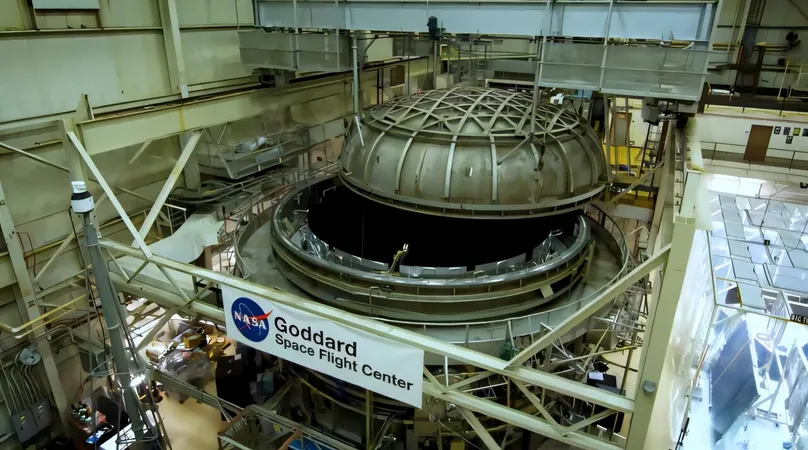
NASA's Roman Space Telescope Passes Crucial Shake Test: What It Means for the Future of Cosmic Exploration
2025-06-09
Author: John Tan
NASA's highly anticipated Nancy Grace Roman Space Telescope has hit a significant milestone, successfully passing its rigorous vibration testing. This critical achievement ensures that the telescope can endure the intense shaking and vibrations of a rocket launch, bringing it closer to unraveling the mysteries of dark energy and other cosmic enigmas.
Cory Powell, the lead structural analyst for the Roman project at NASA's Goddard Space Flight Center, described the testing process, saying, "It’s like simulating a severe earthquake—albeit in a very controlled manner. We meticulously sweep through a range of frequencies, ramping up the intensity to ensure everything holds up as expected." This careful methodology is crucial for guaranteeing the telescope's integrity during the extreme conditions of launch.
To replicate launch scenarios, the team employed a flight-powered configuration and filled the propulsion tanks with approximately 295 gallons of deionized water, mimicking the spacecraft's fuel load. This is part of a series of escalating tests designed to subject the observatory to 125% of the stress it will face.
The Roman Space Telescope is now nearing its assembly completion, with two primary sections: the inner core, which includes the telescope and instruments, and the outer barrel assembly equipped with solar arrays and protective covers. After vibration testing, the core section will head back to Goddard's clean room for thorough post-test inspections to ensure everything remains aligned and functional, including the crucial deployment of the high-gain antenna.
Upcoming assessments will include tests of the core's electronics and a thermal vacuum test, confirming that the system can withstand the harsh environment of space. Meanwhile, the outer portion of the telescope is also under development, with technicians installing and testing its solar arrays to ensure temperature regulation in space.
The team is set to unite the telescope's two main components in November, creating a complete observatory structure by the year's end, followed by final testing processes. The Roman Space Telescope aims for a launch window by May 2027, with aspirations to launch even sooner, potentially in the fall of 2026.
A Network of Innovation and Collaboration
Managed by NASA's Goddard Space Flight Center, the Nancy Grace Roman Space Telescope is a collaborative effort involving various organizations, including NASA's Jet Propulsion Laboratory and Caltech/IPAC, among others. Key industrial partners such as BAE Systems Inc., L3Harris Technologies, and Teledyne Scientific & Imaging are also instrumental in this groundbreaking project.
Join the Journey!
Curious about what lies ahead for this pioneering mission? Click here to explore an interactive virtual tour of the Roman Space Telescope!



 Brasil (PT)
Brasil (PT)
 Canada (EN)
Canada (EN)
 Chile (ES)
Chile (ES)
 Česko (CS)
Česko (CS)
 대한민국 (KO)
대한민국 (KO)
 España (ES)
España (ES)
 France (FR)
France (FR)
 Hong Kong (EN)
Hong Kong (EN)
 Italia (IT)
Italia (IT)
 日本 (JA)
日本 (JA)
 Magyarország (HU)
Magyarország (HU)
 Norge (NO)
Norge (NO)
 Polska (PL)
Polska (PL)
 Schweiz (DE)
Schweiz (DE)
 Singapore (EN)
Singapore (EN)
 Sverige (SV)
Sverige (SV)
 Suomi (FI)
Suomi (FI)
 Türkiye (TR)
Türkiye (TR)
 الإمارات العربية المتحدة (AR)
الإمارات العربية المتحدة (AR)